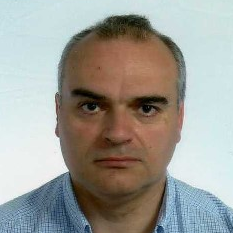Water Quality Optimization
A special issue of Water (ISSN 2073-4441). This special issue belongs to the section "Water Quality and Contamination".
Deadline for manuscript submissions: closed (31 March 2022) | Viewed by 11068
Special Issue Editors
Interests: mechanical processes; optimization; chemical engineering
Special Issues, Collections and Topics in MDPI journals
Interests: Cyanotoxins; cyanobacterial metabolites; cyanobacterial blooms; detection/determination of cyanotoxins; mass spectrometry; water treatment; advanced oxidation processes; environmental chemistry
Special Issues, Collections and Topics in MDPI journals
Special Issue Information
Dear Colleagues,
The availability of water hinges upon a certain water quality level that needs to be reached in order to render water suitable for consumption, farming, and other usages valuable to humans. The accessibility of water is related to ‘Goal 6’ of the United Nations Sustainable Development Goals. For this Special Issue of Water, entitled ‘Water Quality Optimization’, we solicit articles that place emphasis on novel methods that can help us to improve water quality. Therefore, the scope of this Special Issue is broad enough to include new optimization techniques that provide decision-making support to water professionals who seek to screen and optimize any type of water operation, including desalination and wastewater treatment. Such techniques may be novel mathematical or computational models that provide robust and convenient solutions to complex water problems. Contributions on state-of-the-art computational methods are also welcome as long as they are accompanied by a detailed case study in improving a unique water process. Moreover, technological advances that may help us to improve water quality by introducing new knowledge into water chemical systems are also relevant to this Special Issue.
Editor: Dr. George Besseris
Water is probably the most precious resource on the planet. Improvement of water quality is vital to public health and well-being and the protection of the environment. Recent advances in optimization techniques can greatly benefit water utilities by improving the effectiveness and efficiency of processes; however, they have a rather slow uptake by the water sector. The main aim of this Special Issue is to promote the application of novel and advanced optimization techniques in water-related processes that target high-quality water. We welcome original research papers on water-related processes, including drinking water and wastewater treatment (experimental–laboratory, pilot, or actual-scale), the design and development of materials and components for water treatment, improvements to the monitoring of water quality, and methods of analysis.
Editor: Dr. Triantafyllos Kaloudis
Dr. George Besseris
Dr. Triantafyllos Kaloudis
Guest Editors
Manuscript Submission Information
Manuscripts should be submitted online at www.mdpi.com by registering and logging in to this website. Once you are registered, click here to go to the submission form. Manuscripts can be submitted until the deadline. All submissions that pass pre-check are peer-reviewed. Accepted papers will be published continuously in the journal (as soon as accepted) and will be listed together on the special issue website. Research articles, review articles as well as short communications are invited. For planned papers, a title and short abstract (about 100 words) can be sent to the Editorial Office for announcement on this website.
Submitted manuscripts should not have been published previously, nor be under consideration for publication elsewhere (except conference proceedings papers). All manuscripts are thoroughly refereed through a single-blind peer-review process. A guide for authors and other relevant information for submission of manuscripts is available on the Instructions for Authors page. Water is an international peer-reviewed open access semimonthly journal published by MDPI.
Please visit the Instructions for Authors page before submitting a manuscript. The Article Processing Charge (APC) for publication in this open access journal is 2600 CHF (Swiss Francs). Submitted papers should be well formatted and use good English. Authors may use MDPI's English editing service prior to publication or during author revisions.
Keywords
- water quality
- water quality optimization
- water qualimetrics
- statistical/empirical techniques for water quality improvement
- case studies in water quality improvement
- artificial intelligence, evolutionary computation and swarm intelligence in environmental aquametrics
- optimizing desalination processes
- optimizing wastewater treatment processes
- drinking water/wastewater treatment






